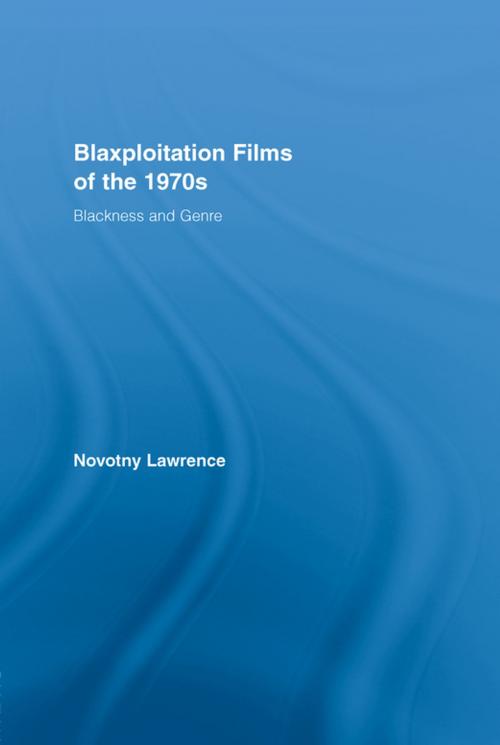Blaxploitation Films of the 1970s
Blackness and Genre
Nonfiction, Entertainment, Film, History, Americas, United States| Author: | Novotny Lawrence | ISBN: | 9781135900359 |
| Publisher: | Taylor and Francis | Publication: | December 12, 2007 |
| Imprint: | Routledge | Language: | English |
| Author: | Novotny Lawrence |
| ISBN: | 9781135900359 |
| Publisher: | Taylor and Francis |
| Publication: | December 12, 2007 |
| Imprint: | Routledge |
| Language: | English |
During the early years of the motion picture industry, black performers were often depicted as shuckin’ and jivin’ caricatures. Specifically, black males were portrayed as toms, coons and bucks, while the mammy and tragic mulatto archetypes circumscribed black femininity. This misrepresentation began to change in the 1950s and 1960s when performers such as Dorothy Dandridge and Sidney Poitier were cast in more positive roles. These performers paved the way for the black exploitation or blaxploitation movement, which began in 1970 and flourished until 1975. The movement is characterized by films that feature a black hero or heroine, black supporting characters, a predominately black urban setting, a display of black sexuality, excessive violence, and a contemporary rhythm and blues soundtrack. Blaxploitation films were made across varying genres, but the questionable elements of some of the pictures caused them to be referred to as "blaxploitation" films with little or no regard given to their generic categorization. This book examines how Cotton Comes to Harlem (1970), Blacula (1972), The Mack (1973), and Cleopatra Jones (1973) can be classified within the detective, horror, gangster, and cop action genres, respectively, and illustrates the manner in which the inclusion of "blackness" represents a significant revision to the aforementioned genres.
During the early years of the motion picture industry, black performers were often depicted as shuckin’ and jivin’ caricatures. Specifically, black males were portrayed as toms, coons and bucks, while the mammy and tragic mulatto archetypes circumscribed black femininity. This misrepresentation began to change in the 1950s and 1960s when performers such as Dorothy Dandridge and Sidney Poitier were cast in more positive roles. These performers paved the way for the black exploitation or blaxploitation movement, which began in 1970 and flourished until 1975. The movement is characterized by films that feature a black hero or heroine, black supporting characters, a predominately black urban setting, a display of black sexuality, excessive violence, and a contemporary rhythm and blues soundtrack. Blaxploitation films were made across varying genres, but the questionable elements of some of the pictures caused them to be referred to as "blaxploitation" films with little or no regard given to their generic categorization. This book examines how Cotton Comes to Harlem (1970), Blacula (1972), The Mack (1973), and Cleopatra Jones (1973) can be classified within the detective, horror, gangster, and cop action genres, respectively, and illustrates the manner in which the inclusion of "blackness" represents a significant revision to the aforementioned genres.















